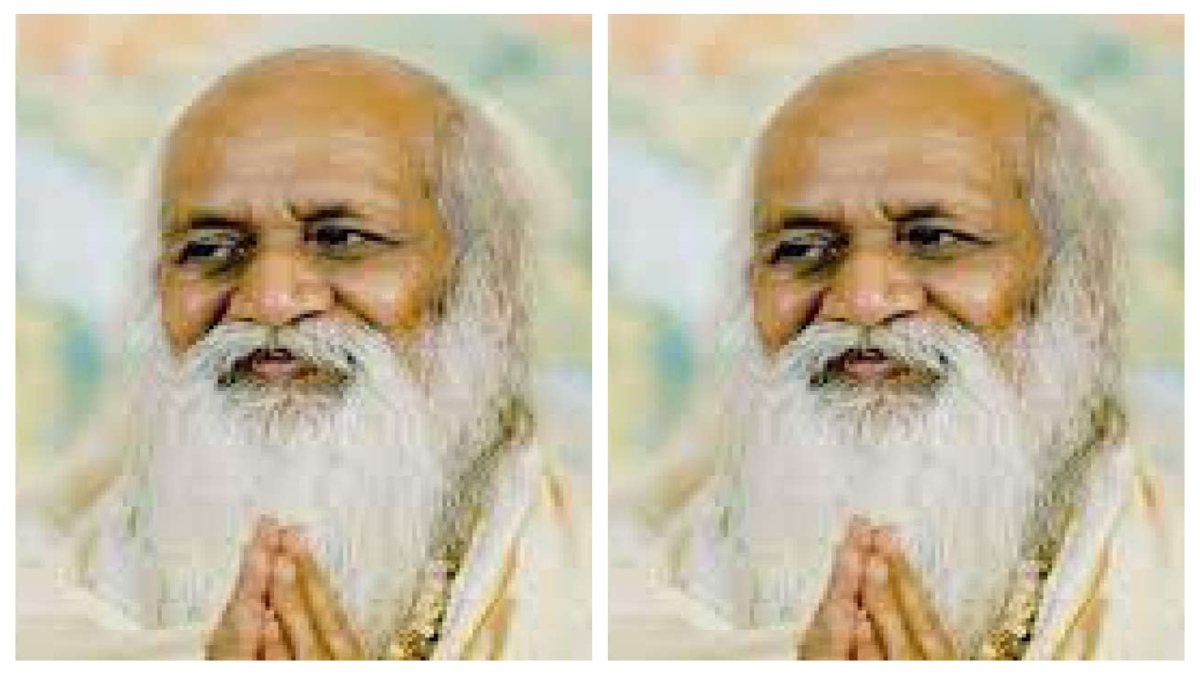
A ccording to Maharishi Mahesh Yogi, “Mankind was not born to suffer, mankind was born to enjoy. The purpose of life is to expand happiness.”
Human beings can get rid of their suffering, attain a state of happiness and share it with others by practising the technique of transcendental meditation— bhavaateet dhyana. Dhyaana is meditation. It is withdrawal of consciousness and senses from the external objects and concentration of the consciousness on the self.
Dhyaana is different from Upaasana—the method of worship. Upaasana depends on the religion, faith upheld by one. So, there are varieties of methods of Upaasana. In fact, there can be as many methods of worship—upaasana padhaties—as there are religions or sects. Dhyaana means concentration of mind on God, or self, or the Supreme principle, or even on nothing—shunyata. In Buddhism almost a similar technique of dhyaana is called Vipaasana. Upaasana, on the other hand, is continuous thought of Him. For example, naam jap—recitation of names of God—is a form of Upaasana.
The word ‘transcendental’ is derived from the word ‘transcend’ which means to ‘go beyond, rise above or be more important, or better the limits set on us by our body and its senses. So, the term transcendental means ‘going beyond the limits of human knowledge, experience, reason’, sensations and sense data. Transcendental meditation (TM) ‘is a method of calming the mind and becoming relaxed by thinking deeply in silence and silently repeating a special word or sound (syllable) or series of words (mantra) many times in a row.
In the Preface of Maharishi Mahesh Yogi’s book The Science of Being and Art of Living, Charles F. Lutes says that the term ‘transcendental meditation’ though seems very complicated and difficult to understand, it simply means a scientific method of “communication with the infinite”. It is scientific because it is ‘systematic and produces measurable and predictable results.’ The outcome of transcendental meditation is ‘realisation and fulfillment of the art of realiaation’. It may be called living with ‘God consciousness’.
The technique of transcendental meditation is religion, sect or faith neutral. It can be used to get in touch with whomsoever one considers as one’s Supreme Being or Supreme principle. It does not require the practitioner to follow or adopt a belief system. It leads to the enhancement of one’s capacities ‘to know, to achieve, to live’ and to follow one’s own faith more enthusiastically. The philosophy underlying the practice of transcendental meditation does not contradict the teachings of any religion or any sect. It is compatible even with the beliefs of atheists and agnostics. So much so that the practice is not inconsistent with any other practice.
The aim of TM is not to teach a theory, the chief purpose of this meditational technique is to “put one in touch with his own essential self, the eternal Being within, by moving one’s attention away from the surface consciousness of change, suffering and stress. One then becomes the Absolute Being, an experience which Maharishi calls ‘God-consciousness’.”
In fact, the practice of transcendental meditation initially does not require a prior understanding of any philosophical or metaphysical theory. It claims that the practitioner does not have to have a prior understanding of the theories behind the practice in order to gain benefit from it. The theoretical foundations reveal themselves as one progresses beyond the introductory level. One starts grasping the metaphysical basis as one gets more and more involved in the practice.
The practice of transcendental meditation involves recitation of a syllable or a string of words—mantra— with closed eyes, for about fifteen to twenty minutes twice every day. The mantra is chosen by the guru– trained teacher, according to the needs of the practitioner. Since guru is needed to understand the need of the learner, to prescribe a recitation mantra for him, and to initiate the learner into the correct technique, the TM is also called guru-centred practice.
According to Maharishi Mahesh Yogi, transcendental meditation “is the most effective form of relaxation. It not only relaxes the body and mind but also feeds them (the practitioners) with vital energy, peace and happiness”. It does so by making practitioners calm their minds by looking inwards. In the meditative state the distinction between inside and outside, ‘I’ and the ‘other’, and the subject-object duality vanishes. In this state there is a continuum between inside and outside, and I and the other. When they successfully do so the stress and fatigue fade and are replaced by a feeling of well-being. Maharishi believed that the ‘act of meditation could bring about great healing’ and bring peace in the world by creating a mindset in which there is no ‘other’.
It has been proved by many scientific researchers, as reported in well-known science research journals that TM “increased creativity and flexibility, increased productivity, improved job satisfaction, improved relations with supervisors and coworkers” by creating positive effects on the human mind and body. The practice of Transcendental Meditation is not a passive state, rather it is a “state of restful alertness where the mind is awake but quiet, silent but alert”
Though the term ‘transcendental meditation’— bhavaateetdhyaan—gained currency world over, when Maharishi Mahesh Yogi, named as Mahad Prasad Verma by his parents, started teaching it to his followers. It was originally practised and taught in the 1950s by His Divinity Swami BrahmanandSaraswati—the Jagadguru Shankaracharya of Jyotir Math, whom Sarvepalli Radhakrishnan described as Vedanta incarnate. Mahesh Yogi was his favourite pupil. From him Mahesh yogi learnt the principles and practices of transcendental meditation for thirteen years.
The writer is former Professor of Philosophy, Delhi University, Delhi.